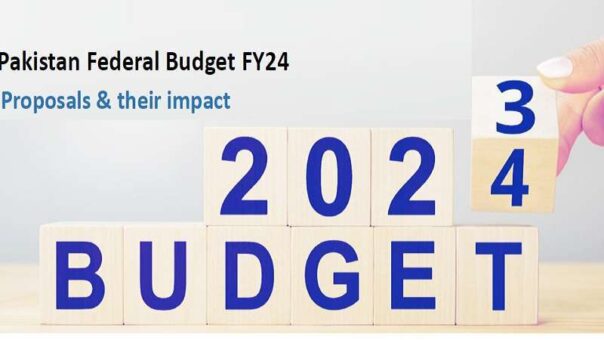The Pakistan Budget for the fiscal year 2023-2024 faces significant challenges due to stagflation, uncertainties surrounding the upcoming elections, and the country’s external account funding gap.
Analysts at Topline Securities said the financing gap has created nervousness in currency, bond, and stock markets, with a high probability of default. The political landscape is also uncertain, with a possibility of a weak coalition government coming to power. The new government’s competence and aggressiveness in addressing the economic crisis will be crucial.
The government may set an unrealistic revenue target to create room for spending in the budget, but excessive spending without substantial tax collection measures would be unwise. The budget outlay for the fiscal year 2023-2024 is estimated to be around Rs13-15 trillion, higher than the proposed amount for the previous year.
The government is likely to set a tax revenue collection target of Rs9-9.2 trillion, representing a 21% increase from the previous year. However, past revenue targets have varied from actual numbers, and a similar variation is expected due to the economic slowdown. Non-tax revenue is estimated at Rs2.5 trillion, achievable through higher State Bank of Pakistan (SBP) profit share and a significant jump in Public Development Loans (PDL).
The budget may focus on expansionary policies to appease the public, including direct cash subsidies for the underprivileged and an increase in minimum wages. Agriculture incentives may also be announced to boost agricultural output. However, it is crucial to balance such measures with substantial tax collection efforts.
The budget is expected to have a neutral to positive impact on the stock market, with no major steps that could adversely affect the market. It is also expected to have a mixed impact on different sectors, with sectors like oil and gas exploration, chemicals, pharmaceuticals, consumers, tobacco, technology, communication, textile, cement, fertilizers, and independent power producers (IPPs) likely to experience a neutral impact. On the other hand, sectors like banks and autos may be neutral to negative, while the steel sector may experience a neutral to positive impact.
The budget’s success depends on bridging the USD funding gap, either through IMF funding, external debt restructuring, or a combination of both. Failure to address this gap may lead to disorderly default and far-reaching consequences. The government is under political pressure due to an economic slowdown and high inflation, and public appeasement measures are expected in the budget.
The budget includes provisions for interest payment, defense expenditures, and the Federal Public Sector Development Program (PSDP). Interest payment is projected to increase significantly due to rising debt and record-high interest rates. The PSDP may face major cuts due to fiscal constraints. The government is expected to increase pensions and salaries of government employees as a populist measure.
The fiscal deficit target for the fiscal year 2023-2024 is set at 6.4% of GDP or Rs6.8 trillion, with higher markup costs and inaccessibility to SBP profits contributing to the increased deficit. The government aims to achieve a primary surplus of 0.5% of GDP.
In summary, the Pakistan Budget for the fiscal year 2023-2024 faces challenges related to the funding gap, political uncertainties, and economic pressures. The government aims to balance spending and revenue collection while addressing key sectors and public concerns. The success of the budget will depend on effective measures to bridge the funding gap, maintain fiscal discipline, and stimulate economic growth.
READ MORE: PAFLA Calls for Removal of Tax Burden on Freelancers
